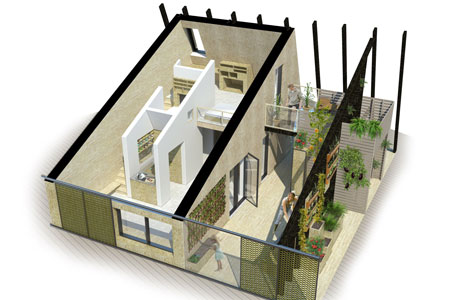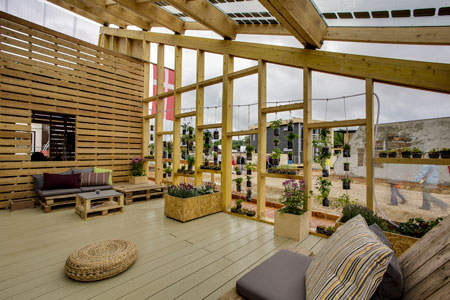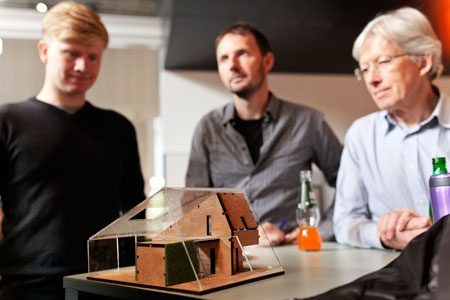In the international Solar Decathlon competition, students will translate knowledge into practice and be equipped for a future job in the construction industry which more than ever needs to think in terms of both energy consumption, sustainability and design.
By journalist Signe Gry Braad
Imagine a future where we all live in houses that produce more energy than we use to keep our bodies warm, our food cold and our computers charged. A future where our buildings are made from sustainable materials that do not harm the environment more than necessary if they one day need to be torn down, and where it does not cost extra to incorporate green thinking in the construction plans.
A lovely dream indeed. And a dream that many would like to see becoming a reality as soon as possible. But for this to happen, future engineers and architects must embrace innovation.
Solar Decathlon
This is one of the reasons why the US Department of Energy back in 2002 launched the Solar Decathlon competition, where students compete to build the best energy-plus house which also must be affordable and well-designed.
Since then, the popularity and prestige of Solar Decathlon has increased, and in 2010 the competition was extended to Europe where it is now held every other year with participants from all over the world.
DTU participated in Solar Decathlon for the first time in 2012, securing 10th place among 20 participants. In 2014, DTU had once again been selected to participate, and this time the team was awarded 8th place overall with the Embrace house—a two-person urban house designed to be built on top of existing high-rise buildings.
Christian Rønne is Associate Professor at DTU Civil Engineering and head of this year's Solar Decathlon project. In his view, it is a great recognition that DTU is picked to participate among universities from all over the world.
"Especially because DTU is the only purely technical university participating in the competition. The other countries typically have classic architecture students on their teams," he adds.

A look into the Embrace house where one part is an unheated atrium which can make life in the city a little greener.
Holistic approach
But Solar Decathlon is not just about energy-efficient construction. The houses are assessed on ten different parameters: energy efficiency, architecture, communication, sustainability, engineering and construction, energy balance, comfort, innovation, function, as well as urban design, transportation and affordability. And it is precisely this structure which is highly educational for the students.
"The participants must also consider the surrounding community which the house is to become part of, and the lifestyle of its occupants—now and in future. The students learn simply to think holistically instead of exclusive focusing on technical aspects, as engineers have a reputation for," explains Christian Rønne.
Embrace did particularly well in the categories sustainability as well as urban design, transportation and price, being awarded fourth and sixth place, respectively.
 |
|
The prototype of the plus-energy house Embrace was first built at DTU in Lyngby.
Subsequently, the house was rebuilt in Versailles in France where it entered the international competition on sustainable building design—both in terms of materials, energy consumption, design and interaction with the surrounding local community
|
Easier transition from student to engineer
The DTU team consisted of 56 students working together in ten small groups, each responsible for one of the ten competition categories. The trick is to work together to produce the best solutions that meet all assessment parameters. An exercise which means that you quickly learn that there is no point in deliberating on every single decision.
"The students will ultimately have to make a choice and apply it practice. Otherwise they will be wasting time on discussions and analyses while the real tasks are sitting idle. And that is the kind of experience which helps facilitating the transition from being a student to becoming an engineer," says the Christian Rønne.
Article in DYNAMO no. 39, DTU's quarterly magazine in Danish.

The Embrace house is a proposal as to how future big city people will live. It is a two-person house that can be built on top of existing high-rise buildings. To reduce energy consumption, the house is divided into two parts consisting of a climate shield and a glass canopy called a weather shield.
The weather shield is not heated, but functions both as a kind of covered atrium where the climate is a little gentler than outside, and as a shield protecting the home from wind and weather.
Read more about the ideas behind the house at www.solardecathlon.dk